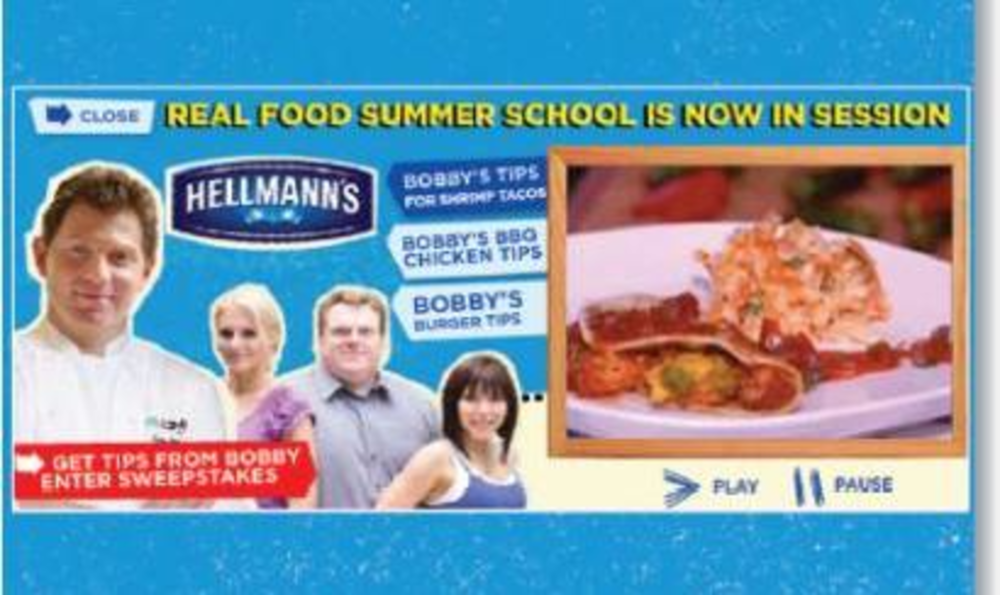As more US families work to choose healthy foods for their kids, food and beverage marketers are responding with new products and marketing messages that attempt to address these concerns.
“There’s a trend toward making healthy food items approachable, fun and appealing to kids,” says Mike Fletcher, senior manager of global youth and family marketing at Burger King. “This is seen on grocery store shelves and in ads from many food companies. It’s a trend that’s building steam.”
Significant changes have already taken place in marketing food and beverages to children, with more in the works, adds Elaine Kolish, director of the Children’s Food and Beverage Advertising Initiative (CFBAI). She points to both the growing availability of reduced-sugar items and the growing number of ads depicting kids engaged in healthy physical activity.
The CFBAI was formed two years ago by the Better Business Bureau to help the industry address concerns over the volume of marketing aimed at children, touting sugary or nutritionally subpar items. Fourteen major food and beverage marketers are members, including Nestle, Coca-Cola, Burger King and Hershey. Several have pledged not to advertise to children under 12, while others have adopted minimal nutritional standards for the products they advertise.
The volume of food marketing to children remains significant, with most efforts emphasizing TV. In July, the Federal Trade Commission released a study that showed a spend of approximately $1.6 billion on marketing food and beverages to young people, ages 2 to 18, during 2006. TV advertising accounted for 46% of all advertising expenditure, while Internet and other media totaled 5% of it.
“TV commands the largest audience, and is still highly efficient” when attempting to reach this market, says Fletcher. He adds that most of today’s food and beverage marketers use fully integrated marketing strategies across a variety of verticals, including both online and direct mail.
“Online has become a larger percentage of marketing budgets for reaching kids,” adds Meghan Schleich, director of client services at VerveLife, a digital entertainment firm. So marketers are spending more money than ever on banner ads, Web sites and other online marketing strategies.
To encourage junior high and high school students to drink milk to stay healthy, the Milk Processor Education Program (MilkPEP), DraftFCB and VerveLife created a microsite featuring free music downloads. Hellmann’s Mayonnaise is including the use of rich media banner ads, with videos of chef Bobby Flay teaching consumers how to cook simple, nutritional food.
“You can’t go to a major consumer package goods company’s Web site and not see [news] about health and wellness,” says Cliff Medney, CMO at Eastwest Marketing, whose clients include Kraft Foods. This news is often offered as helpful tips, he adds, or as recipes.
Many of these sites contain games and other content. But Fletcher insists they aren’t “as competitive as Nickelodeon’s or Disney’s sites, as these companies specialize in content development.” Burger King views its recently launched Club BK site as an online CRM platform, with incentives for moms and kids to keep coming back.
As consumers grasp that “healthy” means the presence of nutritional value — not just low sugar or low fat — other marketers seek to join the wellness trend. “A challenge for marketers is choosing a focus; there are many ways in which foods can be healthy,” says Suzanne Lord Rossi, managing director at Euro RSCG Chicago, who helms the Barilla and Wasa accounts. Whatever good-for-you messaging is used, it’s crucial “that the focus is consistent with the brand’s equities,” she says.
Campaigns
MilkPEP
Music microsite
For “Drink Up, Listen Up,” the Milk Processor Education Program (MilkPEP) partnered with VerveLife, DraftFCB and popular recording artists to spur junior high and high school students to drink milk. On the microsite, teens could download free music, exclusive interviews and music videos and sign up to receive text messages from the artists. Banner ads and posters in schools drove students to the site. Users spent an average of 22 minutes on the site and were exposed to an average of 4.2 nutritional messages within eight months.
Burger King
Online CRM platform
Burger King recently launched Club BK, a Web site for children that features an array of interactive games, nutritional information and special offers. The site is being promoted with a number of TV spots and on bags for Kid’s Meals, as well as by e-mail and in direct mail pieces to the fast-food chain’s database. The second phase of the roll-out will include avatars, or cartoon representations, and chat sessions, which will allow Burger King to create a sustainable dialog with children.
Hellmann’s Mayonnaise
Rich media banner ads
The Hellmann’s Mayonnaise Real Food Summer School campaign uses PointRoll banner ads embedded with videos of chef Bobby Flay, teaching simple cooking skills to consumers. These ads are distributed throughout Yahoo, where the hub of the campaign resides. A Summer School sweepstakes with grilling-themed prizes ends in September. To promote the sweepstakes and videos, Hellmann’s did an e-mail blast to 1.3 million consumers. The ad interaction rate reached 11.7% and the click-through rate hit 0.16%.








